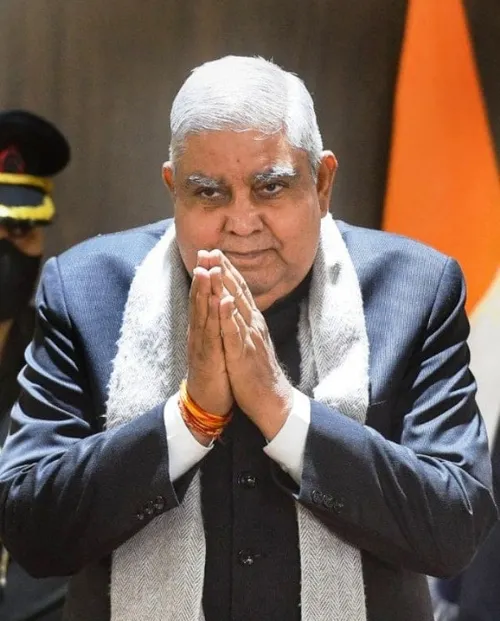India has taken significant steps in strengthening its research and development (R&D) ecosystem, including the creation of the Anusandhan National Research Foundation (ANRF) in August 2023 and the recent appointment of a full-time CEO.
The ANRF aims to stimulate innovation in universities and colleges, facilitate industry-aligned translational research and bridge the gap between academic discoveries and industrial applications.
This initiative is crucial because India’s Gross Expenditure on R&D (GERD) stands at just 0.7 per cent of GDP, significantly lower than developed nations, which allocate 2.5 per cent or more. South Korea dedicates 4 per cent of its GDP to R&D. A well-functioning ANRF could accelerate India’s GERD to developed country levels and sustain it long term.
Core technologies
The authors had argued in an earlier article that core technologies form the foundation for multiple sectors, driving economic and industrial growth.
Examples include lasers, vacuum technologies, transistors and lithium-ion batteries — many of which have led to Nobel Prize-winning breakthroughs. Most core technologies are deliberately invented rather than discovered by accident, often initially developed for strategic and defence applications.
Recent Nobel Prize-winning core technologies include neural networks and machine learning, mRNA vaccines and CRISPR-Cas9 gene editing.
Similarly, optical lithography and low-nanometer node transistors, crucial for semiconductor manufacturing have the potential to win prizes. While some high-impact technologies emerged from serendipitous discoveries, their refinement and commercialisation involved long-term, deliberate research.
For example, while lithium’s energy storage potential was discovered by accident, the development of lithium-ion batteries was a systematic effort spanning decades.
The lithium-ion battery industry exemplifies how strategic funding, policy alignment, and private-sector collaboration create world-class technologies. Nobel Prizes were awarded to Whittingham and Goodenough for the invention of principles and to Yoshino for creating the first commercially viable battery. Sony Corporation took the technology to market in 1991, which was later adopted by Tesla, Nissan and Panasonic.
The Japanese government played a pivotal role by investing heavily in its domestic Li-ion battery industry.
For a country to lead in core technologies, it must align policy, funding, education, and commercialization strategies. Germany has a structured approach to identifying and adopting critical foreign innovations. The government, along with industry leaders and research institutions, develops strategic roadmaps to acquire, adapt and commercialise cutting-edge technologies.
The German model
The Fraunhofer Society, established in 1949, has 76 research institutes, over 30,000 researchers and engineers and an annual budget of €3 billion (70 per cent from industry collaborations), it bridges the “valley of death” between research and industry.
Germany’s Mittelstand — small and medium-sized, family-owned businesses — specialise in niche markets with global demand, prioritise long-term investments in R&D and maintain strong regional and industrial ties. Mittelstand firms account for 60 per cent of employment, underpinning Germany’s leadership in advanced manufacturing and engineering exports.
The Fraunhofer Society works closely with Mittelstand SMEs, providing them with the necessary technological expertise. India’s Council of Scientific & Industrial Research (CSIR) is comparable to Fraunhofer, as both focus on applied research and collaborate with industry.
However, key differences exist. CSIR depends heavily on government funding, whereas Fraunhofer is primarily industry-funded. Fraunhofer’s research is globally competitive, while CSIR’s impact is more national.
Similarly, while Indian SMEs and Mittelstand firms are both resilient and family-run. Mittelstand firms have key advantages. They invest significantly more in R&D, have strong apprenticeship and vocational training systems, better access to finance and fewer bureaucratic hurdles.
To boost India’s core technology ecosystem, learning from Germany’s Fraunhofer and Mittelstand models working in tandem can be invaluable.
Actionable Strategies
Reforming CSIR for greater commercialisation: CSIR labs could be restructured into market-driven organisations by spinning off applied R&D units into independent research-based start-ups, shifting researchers’ focus from publications to patents.
Also, a Section 8 company framework, allowing industry partnerships and philanthropic grants while remaining non-profit, could provide greater entrepreneurial flexibility and ease of operations.
Developing India’s Own Mittelstand for Core Technologies: 100 promising SMEs that exhibit Mittelstand-like qualities — a high-risk R&D appetite, specialisation in technical products and willingness to collaborate with research institutions — could be identified and supported.
For instance, Accurate Engineering, a Pune-based firm, has successfully developed cost-competitive Coordinate Measuring Machines (CMMs) — high-precision optical instruments — dominated by the global standard, Carl Zeiss, Germany.
Establishing Thematic Core Technology Centres: Exclusive research centres could be established within the IITs, IISc and IISERs modelled after Germany’s Fraunhofer and CSIR labs, focussing on both legacy and future technologies: green hydrogen, semiconductors, quantum computing, artificial intelligence etc.
Initially operating under a Section 8 framework, successful centres could later evolve into full-fledged CSIR labs.
Strengthening vocational and early STEM education: To foster a culture of innovation, hands-on training in science and engineering could be integrated from an early age. Steps include introducing vocational courses in electronics, mechanics and optics by Grade 8, ensuring industry experts participate in teaching and expanding Atal Tinkering Labs to 1,000 schools with advanced laboratory facilities.
By prioritising experimental learning, as part of the grading system, students will be better prepared for innovation driven careers.
Investing in Core Technology companies: Investment in legacy companies with existing capabilities in optics, lasers and semiconductor components, such as Hind High Vacuum (optical coatings) and Suresh Indu Lasers and Sahajanand Laser Tech, could be encouraged.
By forming industry-research consortia, these companies would be able to develop indigenous core technologies, for atmanirbharta.
In conclusion, for India to become a global leader in core technologies, we must reform CSIR labs to be more industry-focused, while simultaneously developing Mittelstand-like SMEs, creating specialised thematic research centres, strengthening early STEM education and vocational training and supporting legacy firms in critical tech sectors.
With a coordinated ecosystem involving government, labs, academia and industry, India can transform into a global powerhouse of core technology innovation, critical for a Viksit Bharat by India @ 100. The creation of the ANRF and its CEO appointment could not have been more timely!
Sondhi is former MD&CEO, Ashok Leyland & JCB India; Raman is Principal Research Scientist, Society for Innovation and Development, IISc, Bangalore. Views are personal
can be invaluable
Published on April 10, 2025
Anurag Dhole is a seasoned journalist and content writer with a passion for delivering timely, accurate, and engaging stories. With over 8 years of experience in digital media, she covers a wide range of topics—from breaking news and politics to business insights and cultural trends. Jane's writing style blends clarity with depth, aiming to inform and inspire readers in a fast-paced media landscape. When she’s not chasing stories, she’s likely reading investigative features or exploring local cafés for her next writing spot.






